How to change the vmxnet3 link speed of a Virtual Machine running in VMware vSphere
The default link speed of a vmxnet3 adapter is 10Gbps as shown on the screenshot below. In this post I want to show how we can change the vmxnet3 link speed of a virtual machine.
VMXNET 3 is a paravirtualized NIC designed for performance. VMXNET 3 offers all the features available in VMXNET 2 and adds several new features, such as multiqueue support (also known as Receive Side Scaling in Windows), IPv6 offloads, and MSI/MSI-X interrupt delivery. VMXNET 3 is not related to VMXNET or VMXNET 2.
Source: https://knowledge.broadcom.com/external/article/321259/choosing-a-network-adapter-for-your-virt.html
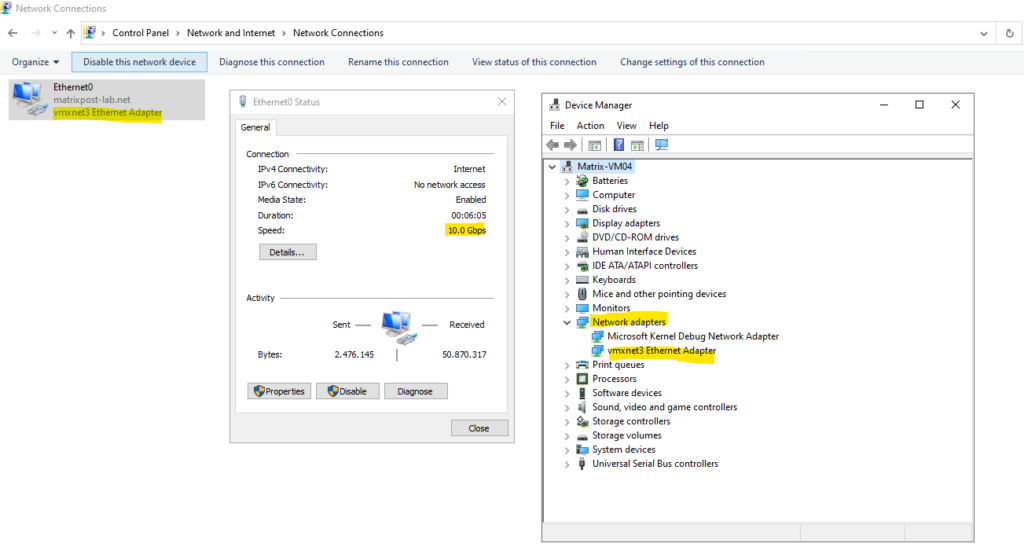
On Linux we can use the ethtool utility to display the link speed as shown below
ethtool – query or control network driver and hardware settings
# ethtool <devname> | grep Speed # ethtool eth0 | grep Speed
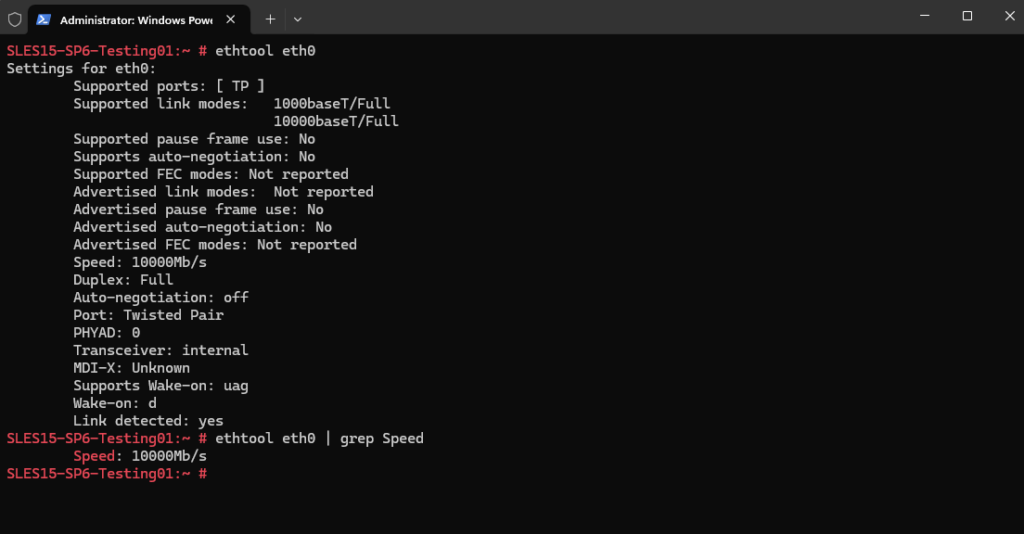
Changing the vmxnet3 link speed for a specific Virtual Machine
To change the default link speed of a vmxnet3 adapter, we can add the following advanced configuration parameter in the vSphere client. The following parameter will change the default link speed from 10.0 Gbps to 20.0 Gbps. To remove this parameter later, we just need to remove the value.
ethernetX.linkspeed ==> link speed (where X is the virtual device number and link speed should be any value between 10000 and 65000)
ethernet0.linkspeed ==> 20000On vSphere 8.0.2 and later vmxnet3 link speed supports speeds between 10Gbps and 65Gbps.
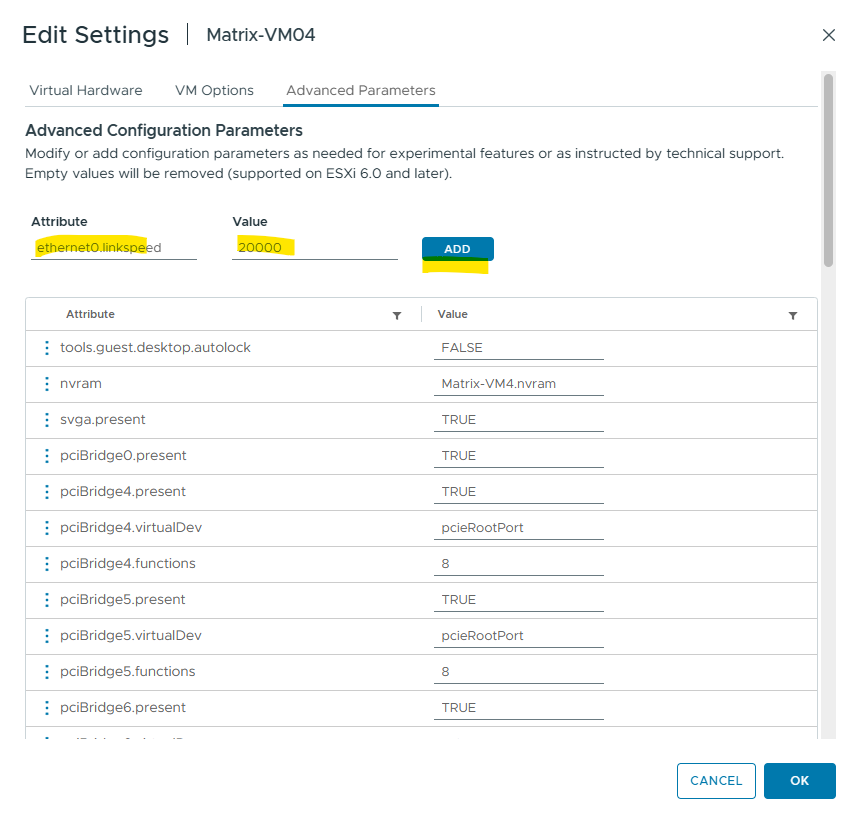
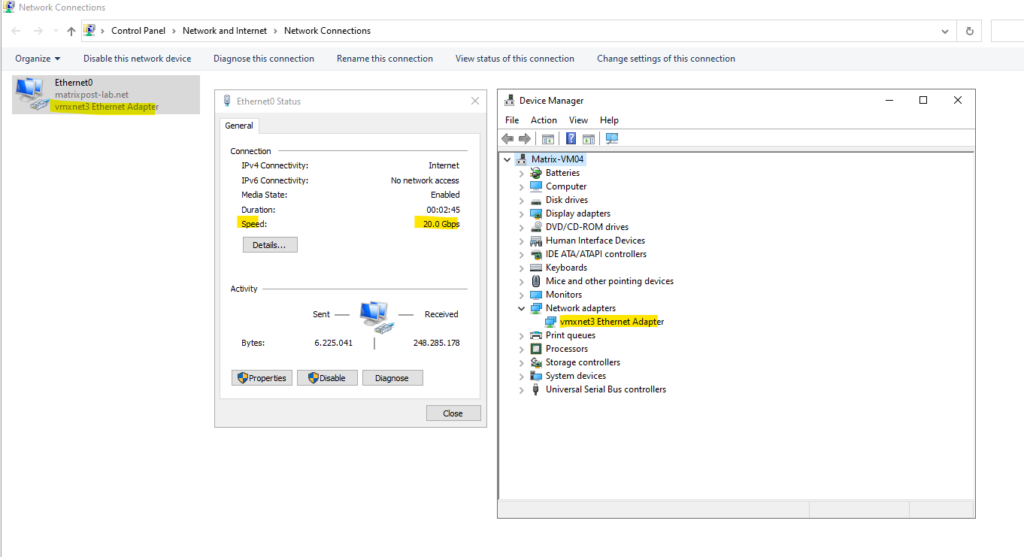
The parameter name for Linux machines is the same with ethernet0.linkspeed, just adjust the number to match with the NIC on your machine.
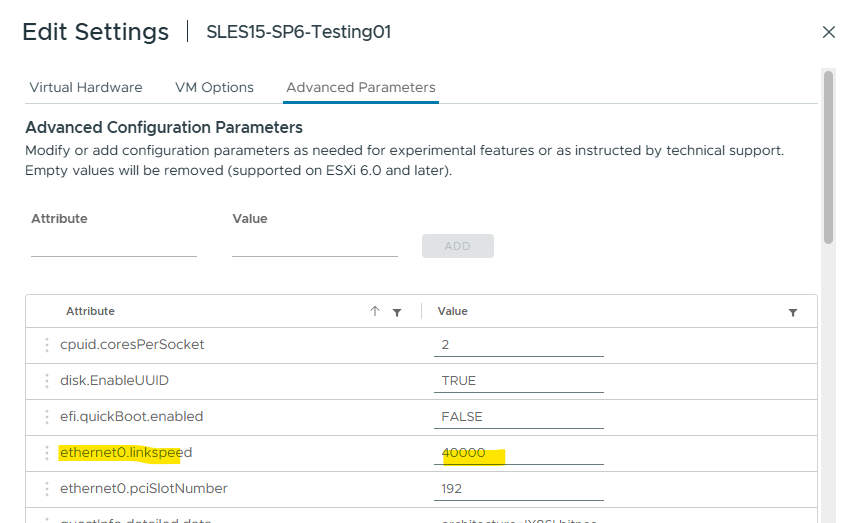
Source: https://knowledge.broadcom.com/external/article?articleNumber=368812
VMware vSphere Network Adapter Types
The type of network adapters that are available depend on the following factors:
- The virtual machine compatibility, which depends on the host that created or most recently updated it.
- Whether the virtual machine compatibility has been updated to the latest version for the current host.
- The guest operating system.
Supported NICs currently differ between an on-premises environment and VMware Cloud on AWS. The following NIC types are supported in an on-premises deployment:
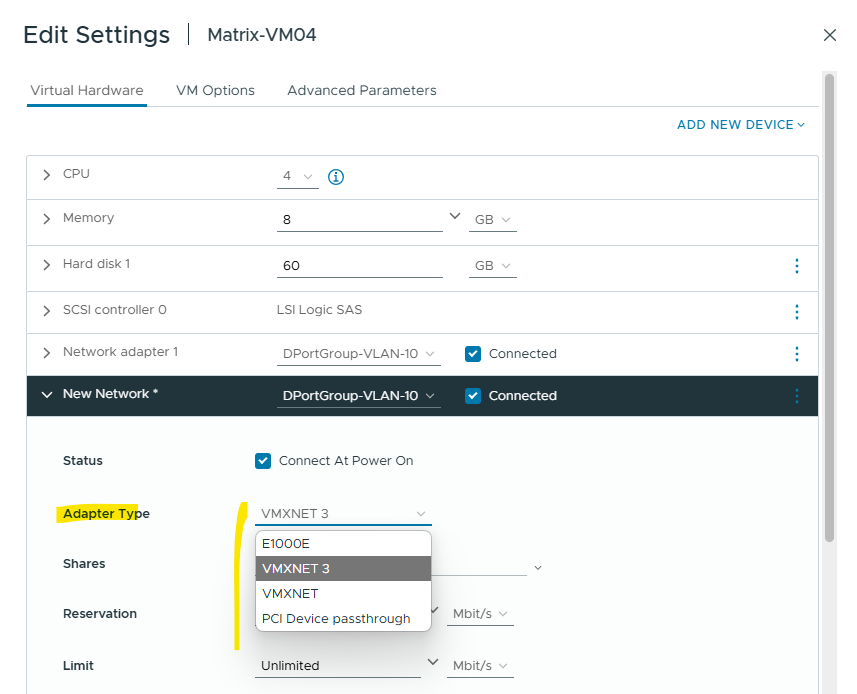
E1000E
Emulated version of the Intel 82574 Gigabit Ethernet NIC. E1000E is the default adapter for Windows 8 and Windows Server 2012.
E1000
Emulated version of the Intel 82545EM Gigabit Ethernet NIC, with drivers available in most newer guest operating systems, including Windows XP and later and Linux versions 2.4.19 and later.
Flexible
Identifies itself as a Vlance adapter when a virtual machine boots, but initializes itself and functions as either a Vlance or a VMXNET adapter, depending on which driver initializes it. With VMware Tools installed, the VMXNET driver changes the Vlance adapter to the higher performance VMXNET adapter.
Vlance
Emulated version of the AMD 79C970 PCnet32 LANCE NIC, an older 10 Mbps NIC with drivers available in 32-bit legacy guest operating systems. A virtual machine configured with this network adapter can use its network immediately.
VMXNET
Optimized for performance in a virtual machine and has no physical counterpart. Because operating system vendors do not provide built-in drivers for this card, VMware Tools must be installed to have a driver for the VMXNET network adapter available.
VMXNET 2 (Enhanced)
Based on the VMXNET adapter but provides high-performance features commonly used on modern networks, such as jumbo frames and hardware offloads. VMXNET 2 (Enhanced) is available only for some guest operating systems on ESX/ ESXi 3.5 and later.
VMXNET 3
A paravirtualized NIC designed for performance. VMXNET 3 offers all the features available in VMXNET 2 and adds several new features, such as multiqueue support (also known as Receive Side Scaling in Windows), IPv6 offloads, and MSI/MSI-X interrupt delivery. VMXNET 3 is not related to VMXNET or VMXNET 2.
More you will find in the following article by Broadcom https://knowledge.broadcom.com/external/article/321259/choosing-a-network-adapter-for-your-virt.html.
Links
How to change the vmxnet3 link speed of a VM
https://knowledge.broadcom.com/external/article/368812/how-to-change-the-vmxnet3-link-speed-of.htmlNetwork Throughput in a Virtual Infrastructure
https://www.vmware.com/pdf/esx_network_planning.pdfChoosing a network adapter for a virtual machine
https://knowledge.broadcom.com/external/article/321259/choosing-a-network-adapter-for-your-virt.htmlethtool(8) – Linux man page
https://linux.die.net/man/8/ethtool


